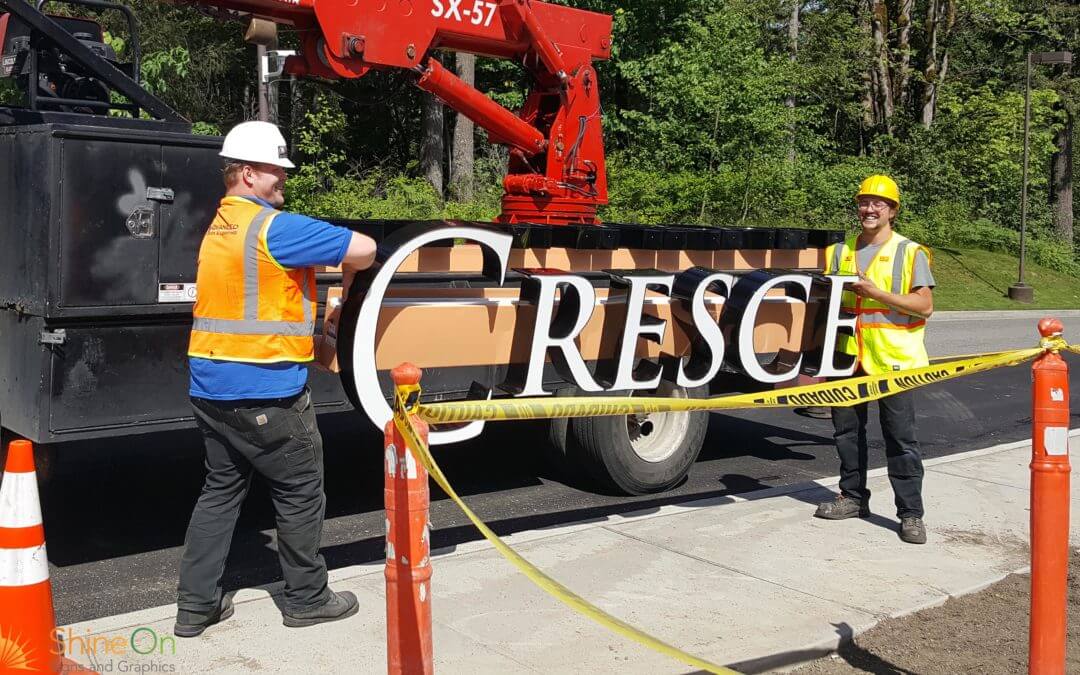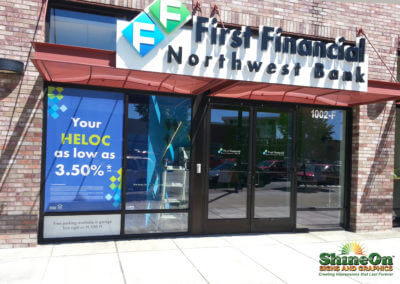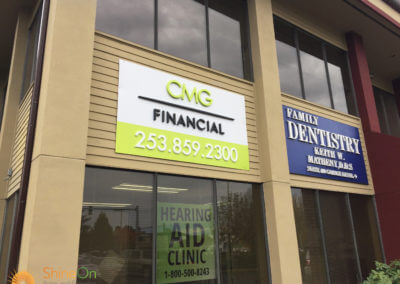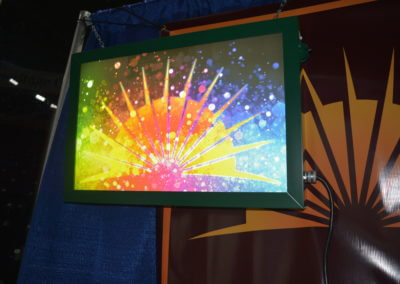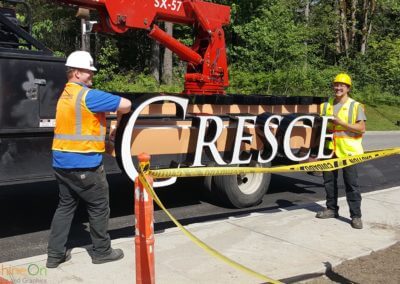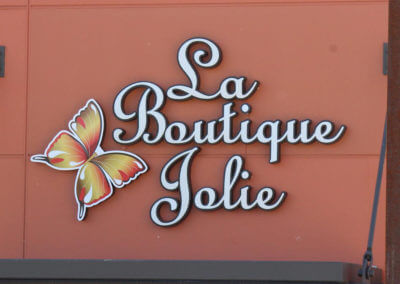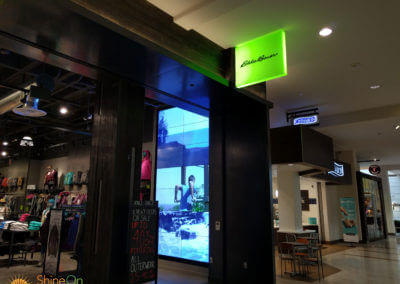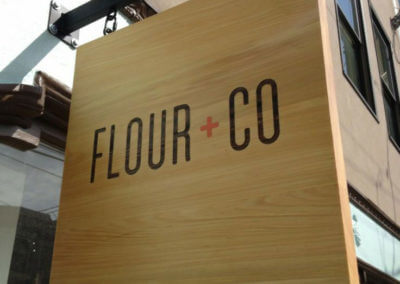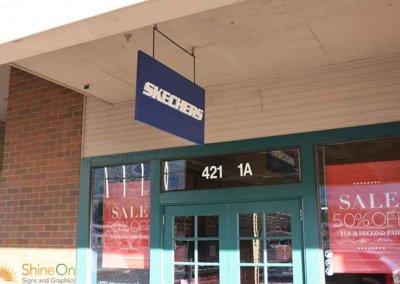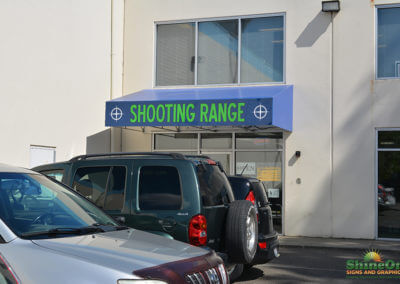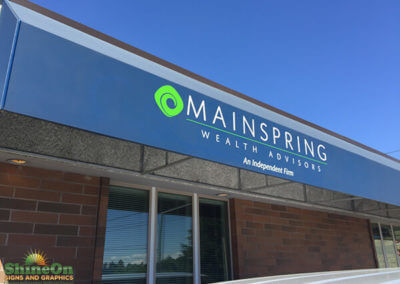Exterior signs can be broken down into four main categories: non-illuminated signs, illuminated signs, Blade signs/Perpendicular signs, and awnings. Each has its own advantages and disadvantages.
Non-Illuminated Signs
The obvious benefit of non-illuminated signs is that they do not require electricity. This means from an operational and installation standpoint, you are saving money. Ideal for companies which close at night and do not require people being able to find them 24 hours a day. Non-illuminated signs save time and money for the company but ensure people can identify and find the building during normal hours.
Non-illuminated signs are typically one of three types: Dimensional Letters, Aluminum Pan Letters with vinyl graphics, or simple vinyl lettering.
Illuminated Signs
Although illuminated signs can refer to any signage with lighting, we’ll keep this group for those signs that don’t fall into other categories. There are two ways to light signs: inside the elements, or outside the elements.
Examples of inside lighted signs are Cabinet signs and Channel Letters. These are two of the most common types of building signs you see, as they provide high visibility, flexible installation options, and are extremely customizable. Lighting options include front lit, back lit (halo lit), or a combination and can be mounted either on a raceway or directly to the face of the building.
Outside the elements refers to signs that are illuminated using gooseneck lighting or up lighting- that is, light shining on the sign from a secondary source, not via the sign itself. This can be one way to turn a non-illuminated sign into a lit sign if you decide it’s necessary.
Choosing an illuminated sign is ideal for any company which will be operating outside of daylight hours, depends on visual brand awareness, or is in high traffic areas and needs to stand out.
Blade signs/ Perpendicular Signs
Blade signs and perpendicular signs are types of building signs that extend away from the face of the building perpendicularly. These signs are great for capturing the attention of passerby’s who otherwise wouldn’t be looking directly at the building. Often seen on corners of buildings or mounted in front of strip mall style storefronts, blade signs are an effective method for attracting visitors.
Blade and perpendicular signs can be either illuminated or non-illuminated. They can be made out of PVC, aluminum, or wood depending on their function and the aesthetic of your brand. With a number of mounting options, these signs can be placed to effectively capture the most attention possible, especially those who would be walking past your storefront and not looking directly at it. Typically these are used as a supporting sign to the main building sign, but in certain situations, a well placed, properly sized blade/perpendicular sign can draw all the attention your company needs.
Awnings
Awnings are a less common type of building sign, often used in conjunction with a larger building sign, or as a way to add branding when no building space is available (ie apartments above a restaurant in the city). Printed fabric stretched over a frame provides real-estate for your company name, logo or brand. Not to mention it can give patrons a place to escape the weather in times of rain or sun. These can be of any size, custom fit to any location.
If you are in the market for an exterior building sign, let Shine On Signs help. Our team will help you navigate the options and choose the right sign for your business. One thing you must be aware of when choosing building signage (both interior and exterior) is city codes, permitting, and requirements by the landlord/property manager. Our team is knowledgeable in all these areas to help avoid costly and timely mistakes that prevent you from getting the sign you want. Talk to a team member today to get started on your exterior building sign project.

